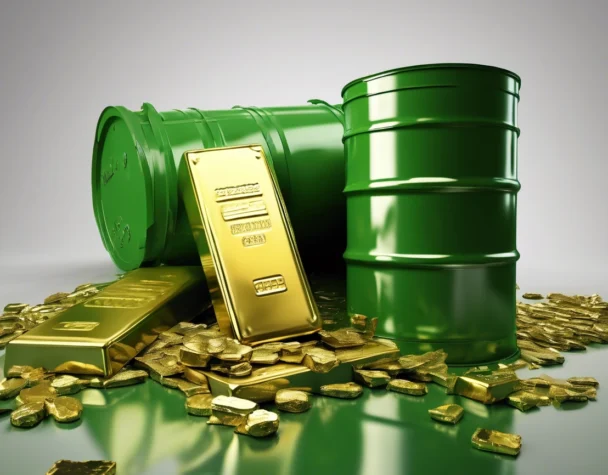
Commodities Shift as Oil Dips, Gold Volatile, and Battery Metals Enter Market
Thu, April 24, 2025Oil and Gold React to Trade Policy and Supply Concerns
Commodity markets are navigating turbulent waters this week as oil prices slump and gold exhibits volatility, both influenced by geopolitical and macroeconomic developments. Brent crude has fallen by 2%, and U.S. oil prices are down 22% since their peak earlier in the year. The steep decline is largely driven by oversupply concerns, as OPEC loosens production quotas and member states prioritize national output over collective stabilization efforts.
Kazakhstan and other producers are ramping up production, heightening fears of a global oil glut. These concerns persist despite recent U.S. policy shifts that suggest a cooling of trade tensions with China. According to the International Monetary Fund, oil prices are projected to average $66.9 per barrel in 2025—down 15.5% year-over-year—due to sluggish trade and excess supply. Read the full IMF outlook here.
Meanwhile, gold prices fell 3% following U.S. President Trump’s comments supporting Federal Reserve Chair Jerome Powell and indicating a less aggressive stance on China. These remarks reassured markets, reducing demand for safe-haven assets like gold. However, analysts remain bullish on gold’s long-term trajectory. JP Morgan predicts that prices could exceed $4,000 per ounce by mid-2026, driven by persistent inflationary pressure and growing recession risks. The bank sees gold averaging $3,675 per ounce by Q4 2025. See JP Morgan’s forecast here.
Battery Metals and Green Commodities Gain Momentum
As demand for clean energy soars, futures trading for key battery metals is entering a new phase. Benchmark Minerals Intelligence has partnered with ICE Futures Europe to introduce cash-settled futures contracts for lithium carbonate, lithium hydroxide, spodumene concentrate, and cobalt hydroxide. These contracts, set to launch in June pending regulatory approval, aim to bring price transparency and risk hedging tools to an increasingly important segment of the commodity market. The move reflects the rising influence of electric vehicle production and energy storage on global materials demand.
Meanwhile, the London Metal Exchange is spearheading a push for sustainability in base metals. The LME plans to implement a “green premium” framework that will distinguish metals produced via environmentally responsible methods. Certified green aluminium, copper, nickel, and zinc will be traded through the Metalshub platform, encouraging a cleaner supply chain. Companies must meet rigorous environmental standards set by industry bodies such as the Nickel Institute and International Aluminium Institute to qualify for the premium designation.
In the agricultural space, wheat markets show signs of pressure despite speculation-driven short positions. The USDA’s April report raised ending stock estimates and reduced exports, indicating oversupply and tempering price recovery hopes.
Conclusion
From declining oil prices to rising demand for sustainable and battery-linked commodities, the landscape is shifting fast. While traditional commodities remain vulnerable to macroeconomic swings and policy shifts, emerging sectors like battery materials and green metals are gaining ground as long-term investment plays. Traders, investors, and policymakers will need to navigate both caution and innovation in the evolving commodity markets.

